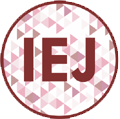The Concept of Welfare From Siyasah Syar’iyyah Perspective and Its Implementation on Zakat Management in Indonesia
DOI:
https://doi.org/10.21111/iej.v5i1.3666Keywords:
Welfare, siyÄsah syar’iyyah, zakat, CIBEST modelAbstract
The discourse on welfare is one discussion in economics that has been a concern for all countries in the world. By raising the issue of welfare, a government can legitimize its power. It is considered like ‘giving bread’ to the community, so that they are silent and obey to the government. In addition to that pragmatic purposes, the welfare issues also represent a moral dimension that the government pay attention to his people. In this regard, the United Nations with his UNDP formulating public welfare measure, which is called Human Development Index. Among the indicators of welfare according to this index are per capita income, long life span and level of education achieved. But behind it all, the understanding of welfare that is often understood in western economy have flaws. The welfare that is often used as a benchmark is the welfare with elements of materialism and hedonism without even the slightest attention to the religious element. It is shown from the majority-or even all-indicators of welfare that did not include religious aspects, and only made the mundane aspects as its main benchmark. This weakness shown by the phenomenon of the comforts of life in the world. Norway, a country that according to the HDI index is the most prosperous country, has a quite high suicide rate, at 28 people per 100,000 inhabitants. When compared with Egypt which ranks only 112th in the HDI, the rate of suicide is only 0.1 for each 100,000 inhabitants. This study aims to examine the concept of the budget in the perspective of siyÄsah syari’iyyah and its implementation in the management of zakat in Indonesia. This paper concludes that masÌ£ lahÌ£ ah is a concept in siyÄsah syar’iyyah which is most appropriate in describing welfare. In the context of siyÄsah syar’iyyah, zakat management in Indonesia has been regulated by the government through the Act. No. 23 of 2011, government rules. No. 14 of 2014 and derivative regulations of both. To improve the level of welfare or masÌ£ lahÌ£ ah, the government also uses the CIBEST method which is integrated in the National Zakat Index, which also measures spiritual aspects in human life.References
Al-Albani, Muhammad NÄshiruddin. As-Silsilah Ash-Shohihah. Juz II. Riyadh: Maktabatul Ma’Ärif.Al-Attas, Syed M. Naquib. 2001. Prolegomena to the Metaphysics of Islam, Kuala Lumpur: ISTAC.Al-Buthi, Muhammad Said Ramadhan. 1973. Dhawabith Al-Maslahah Fi Asy-Syariah Al-Islamiyyah. Damaskus: Muassasah Ar-Risalah.Al-Faruqi, Ismail Raji. 1988. Tauhid. Bandung: Pustaka.Al-Jauziyyah, Ibnu Qoyyim. 1423 H. I’lÄm Al-Muwaqqi’in ‘an Rabb Al-‘Alamiin. Vol I. Saudi Arabia: DÄr Ibnu Al-Jauzi.Ar-RÄzi, ImÄm Muhammad bin Abi Bakr bin Abdil Qadir. 1986. Mukhtar As-ShihÄh. Lebanon: Maktabat al-LibnÄn.Asy-SyÄthibi, Abu Ishaq. 1968. Al-Muwafiqat fi Ushul Asy-Syari’ah. Juz II. Beirut: DÄrul Ma’rifah.At-Tirmidzi, Abu IsÄ Muhammad bin IsÄ. 1998. Sunan at-Tirmidzi. Juz IV. Beirut: Darul Gharb Al-Islamiy.Az-Zuhaili, Wahbah bin MusthafÄ. 1986. Ushul Fiqh Al-Islamiy, Juz II, Damaskus: Darul Fikr.Beik, Irfan Syauqi. Arsyianti, Laili Dwi. 2016. “Measuring Zakat Impact on Poverty and Welfare Using CIBEST Modelâ€. Journal of Islamic Monetary Economics and Finance. 1(2). 141-160.Center of Strategic Studies. BAZNAS. 2019. Indonesia Zakat Outlook 2019. Jakarta: Center of Strategic Studies BAZNAS.Chapra, M. Umer. 1979. The Objectives of Islamic Order. Leicester: The Islamic Foundation.Davies, Antony. Quinlivan, Gary. 2006. “A Panel Data Analysis of The Impact of Trade on Human Developmentâ€, The Journal of Socio-Economics. 35(5). 1-18Daud, Wan Mohd Nor Wan. 2011. Budaya Ilmu dan Gagasan 1 Malaysia Membina Negara Maju dan Bahagia. Putrajaya: Akademi Kenegaraan BTN.Doniach, N. S. (Ed.). 1982. The Concise Oxford English-Arabic Dictionary of Current Usage. Oxford: Oxford University Press.El Assiouty, Magdi Nafed. 1998. Banking and Financial Dictionary. Mesir: Al-Ahram Commercial Press.Goodin, Robert E. 1999. The Real Worlds of Welfare Capitalism, Cambridge: Cambridge University Press.Hornby, A. S. 1995. Oxford Advanced Learner’s Dictionary of Current English. Oxford: Oxford University Press.Ibn ‘Asyur, Muhammah Thahir. 2001. Maqashidu Asy-Syariah Al-Islamiyyah. Yordania: Daar An-Nafais.Khan, Muhammad Akram. 1994. An Introduction to Islamic Economics, Pakistan: International Institute of Islamic Thought and Institute of Policy Studies.McGillivray, Mark. 1991. “The Human Development Index: Yet Another Redundant Composite Development Indicator?â€. at World Government. 19(10). Great Britain: Pergamon Press.Smith, S. Stephenson, et.al. 1996. The New International Webster’s Comprehensive Dictionary of the English Language. Florida: Tident Press International






